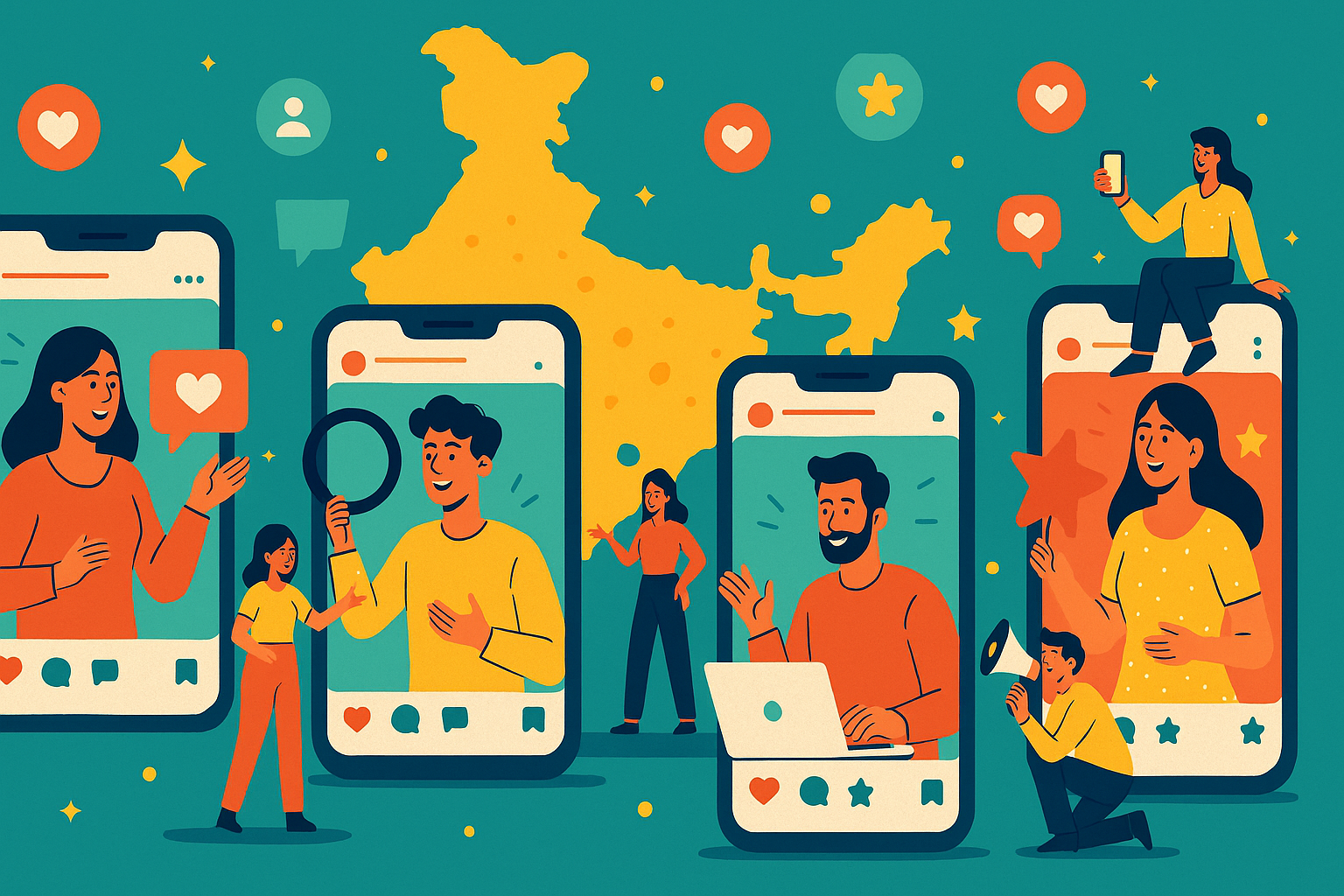In the world of influencer marketing, bigger isn’t always better. Over the past few years, Indian brands have witnessed a clear shift towards collaborating with micro-influencers (typically 10,000–100,000 followers) and nano-influencers (under 10,000 followers). These smaller-scale creators are emerging as powerful allies for marketers, often delivering engagement and authenticity that mega-celebrities struggle to match. In this post, we explore why micro and nano influencers are on the rise in India, backed by data and examples, and how brands can leverage their unique strengths.
Why Small Influencers Make a Big Impact
Micro and nano influencers thrive on niche communities and close-knit follower relationships. Their audiences, while smaller in size, are highly targeted and trustful. A 2023 study by Socialbakers revealed that micro-influencers see about 60% higher engagement rates compared to mega-influencers. This higher engagement is evident on platforms like Instagram, where a micro-influencer might average a 5-6% engagement rate versus a celebrity’s 1-2%.
In India, where consumers are increasingly skeptical of overly polished endorsements, micro-influencers bring an authentic voice. Their content tends to be more raw, personal, and aligned with everyday life. For example, rather than a Bollywood actor posting a generic ad for a skincare brand, a micro-influencer in a small city might share a video of how she uses that product in her daily routine, speaking in the local language. Such content resonates deeply with viewers, building trust.
Success Stories and Use Cases
Many brand campaigns illustrate the power of going small. One global example often cited is Patagonia’s #MyTravelGear campaign, where the outdoor apparel brand partnered with micro-influencers who were passionate hikers and climbers. These influencers, each with a modest following, shared authentic posts about using Patagonia gear on their adventures. The campaign achieved deeper resonance in the outdoor community than a mass promotion might have.
Closer to home, Indian beauty and personal care startups frequently leverage armies of micro-influencers – for instance, a D2C brand grew in part by having thousands of mom bloggers and beauty micro-influencers review their products on Instagram and YouTube. This grassroots approach created immense word-of-mouth that traditional celebrity endorsements couldn’t match.
*(For a detailed comparison of micro vs. celebrity influencer outcomes, check out our case study on Micro-Influencers vs Celebrities in Campaigns.)*

